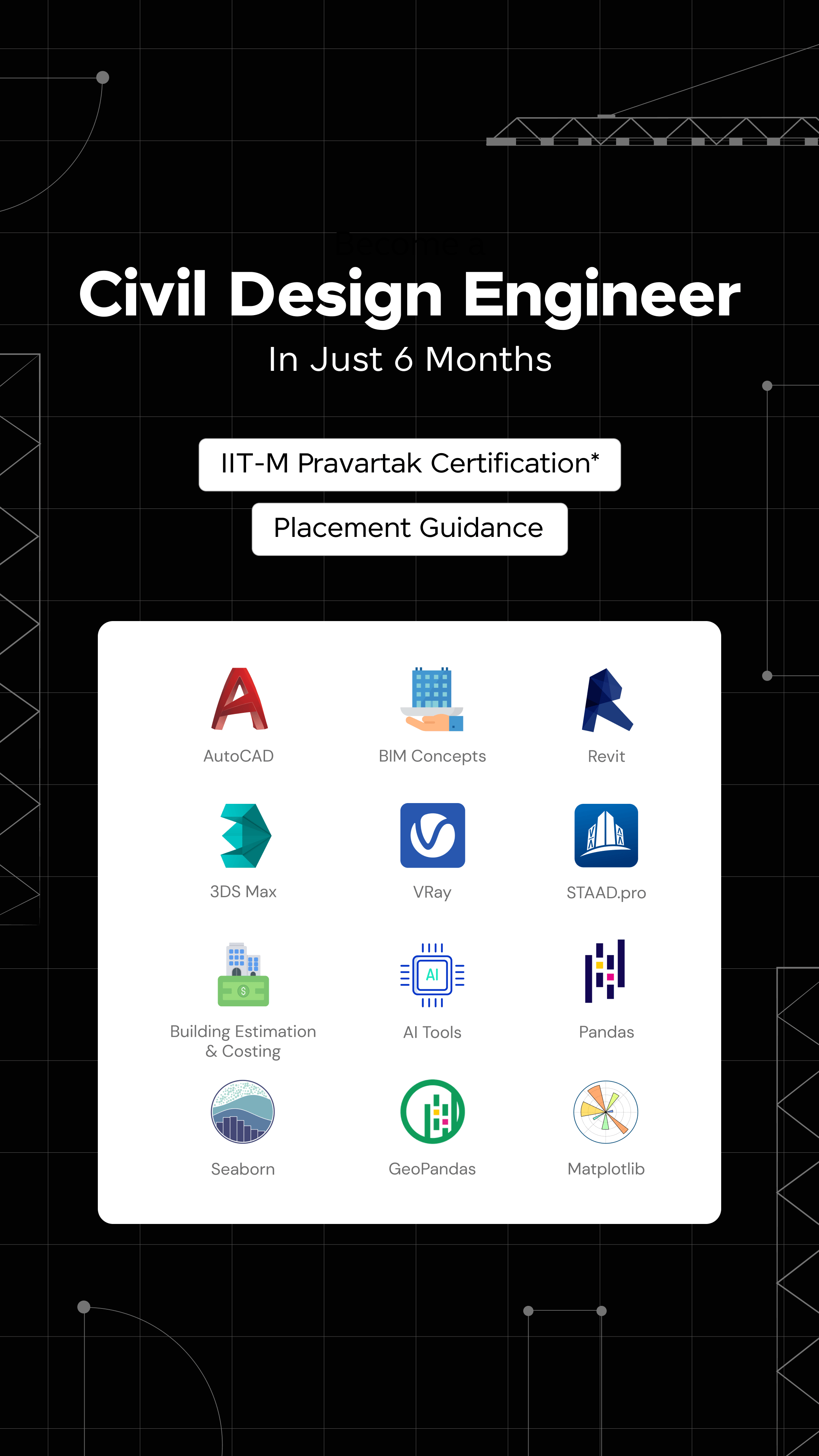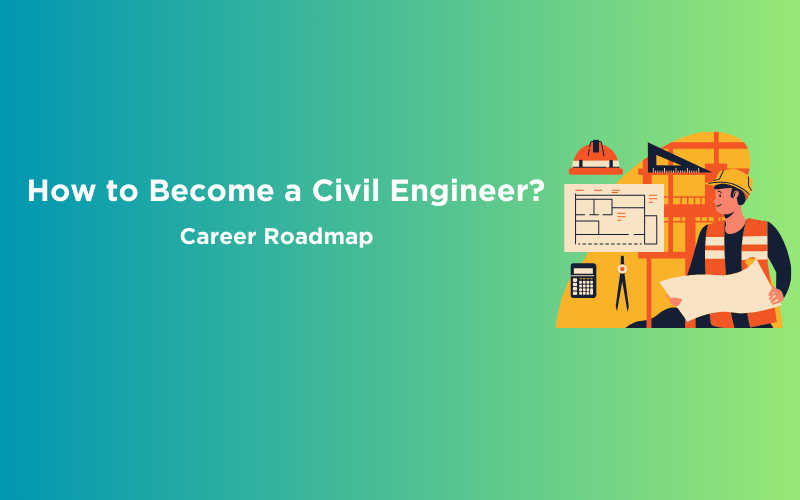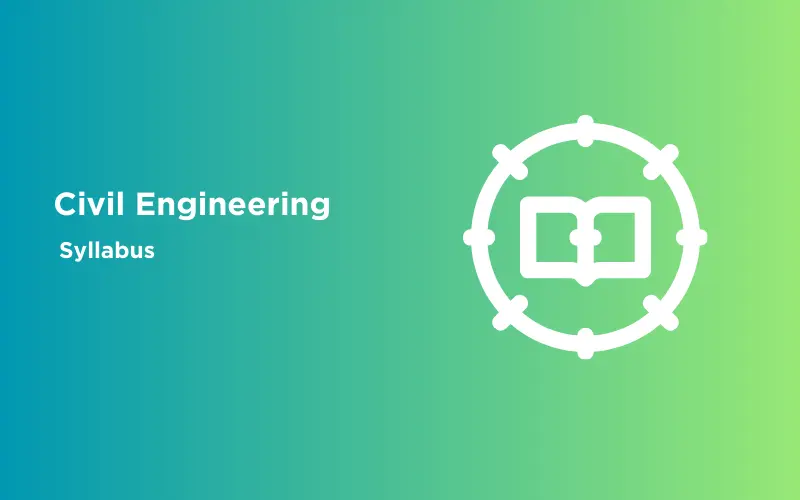
CAD Designer Resume Examples & Tips to Land Your Dream Job
Oct 10, 2025 6 Min Read 2138 Views
(Last Updated)
As India rapidly shifts from traditional drafting to advanced CAD and BIM (Building Information Modeling) workflows, initiatives such as Make in India and the Smart Cities Mission have fueled a surge in infrastructure and manufacturing projects, indicating that CAD designers are in high demand.
But more demand also means more competition, especially for high-paying roles.
And, surprisingly, the one thing that quietly kills your chances?
A CAD designer resume that doesn’t align your skills with what hiring managers are looking for.
We’ve done the groundwork, so you don’t have to spend another night staring at your ceiling, wondering why you’re getting ignored despite all the right skills.
Table of contents
- What Should a CAD Designer Resume Include?
- Resume Example of an Entry-level CAD Designer
- Why This CAD Designer Resume Works
- Resume Example of a Mid-level CAD Designer
- Why This CAD Designer Resume Works
- Resume Example of an Experienced CAD Designer
- Why This CAD Designer Resume Works
- CAD Designer Resume for Freshers: How to Compensate for Lack of Experience
- Highlight CAD Software Skills
- Showcase Academic Projects
- Certifications & Training
- Technical Skills Section
- Portfolio Link
- Participation in Design Competitions
- Soft Skills
- Workshops & Webinars Attended
- Knowledge of Industry Standards
- Wrapping it together
- FAQ
- How to list CAD skills on a resume?
- How to write AutoCAD skills in resume examples?
- How to create a CAD Designer resume for freshers?
- What are a few CAD Designer resume tips for experienced?
What Should a CAD Designer Resume Include?
A CAD designer’s resume is a professional representation of their problem-solving skills, precision, and project impact. You can apply for a role in any domain, be it manufacturing, architecture, or infrastructure design. Your resume should reflect both your technical mastery and professional clarity.
Here’s how to structure a resume that speaks directly to recruiters, hiring managers, and applicant tracking systems (ATS).
- Start with Clear Contact Information
Begin with the essentials: your full name, phone number, professional email address, and location. Ensure your contact information is easily visible at the top of the page. If you have a personal website or online portfolio, include the link right here.
- Write a Purposeful Summary
The resume summary (or objective) sits just beneath your contact details. In 2–3 lines, explain what you do, what you’ve worked on, and what value you bring. Focus on your CAD skills, years of experience, industries you’ve worked in, and the kind of projects you handle.
Example:
“Detail-oriented CAD designer with 4+ years of experience in industrial and mechanical drafting. Proficient in AutoCAD and SolidWorks, with a track record of delivering error-free 2D and 3D models for large-scale manufacturing projects.”
- Highlight Technical and Soft Skills
Technical skills are the heartbeat of any CAD designer’s resume. Make sure you include a focused list of software, tools, and design methods you’re confident using:
- AutoCAD, SolidWorks, Revit, Inventor
- 3D modeling tools like Rhino, Fusion 360, Blender
- Geometric Dimensioning and Tolerancing (GD&T)
- Drafting, blueprint interpretation, and rendering
- Knowledge of industry-specific codes or design standards
Equally important are the soft skills that enable collaboration and project delivery. CAD designers frequently collaborate with architects, engineers, and product teams, so skills such as communication, teamwork, and attention to detail are crucial. You can include:
- Analytical thinking
- Time management
- Team collaboration
- Problem-solving
- Showcase Relevant Work Experience
The experience section is where your resume really begins to speak. Focus on CAD-related responsibilities and show how your work made a measurable impact. Use active verbs and short, clear statements that emphasize value.
Instead of saying:
“Was responsible for 2D modeling.”
Say:
“Designed over 200 detailed 2D layout drawings, reducing engineering revisions by 20%.”
Mention specific industries, tools used, project scale, or cross-functional collaboration. Each bullet should help the recruiter visualize the kind of designer you are.
- Include Your Education
Your educational background should support your CAD credentials. List your degree or diploma, institution name, graduation year, and any relevant coursework or honors (like mechanical design, technical drawing, etc.).
Even if you’re applying for entry-level roles, a strong academic base in design or engineering adds weight to your resume.
- Add Relevant Certifications
Certifications can give your resume a competitive edge, especially in technical roles. List industry-standard certifications such as:
- AutoCAD or SolidWorks Certification
- Autodesk Certified Professional
- Kaizen or Six Sigma (especially for manufacturing roles)
- BIM Certifications (for architecture and construction)
These show recruiters that you’ve taken the initiative to gain industry-recognized credibility.
- Link to Your Portfolio
CAD is a visual field; your resume should lead recruiters to your portfolio of design work. Include a live URL to an online folder, website, or Behance/Dribbble profile where you’ve uploaded:
- 2D layouts
- 3D models
- Drafting samples
- Completed academic or freelance projects
Make sure each file is titled clearly and professionally presented.
- Highlight Projects
Even if you’re light on professional experience, projects can carry weight. Add a section that details academic, freelance, or personal CAD projects. For each one, briefly describe the scope, tools used, and what you accomplished.
- Tailor for Each Job
This is one of the important sections that most of them overlook while applying (All credits to the easy click option). No two jobs are the same, and your resume shouldn’t be either. Customize it by carefully reading the job description and reflecting those exact skills, tools, and industry focus in your resume. Use keywords like “AutoCAD drafting,” “BIM modeling,” or “mechanical design” wherever relevant to improve ATS visibility.
A well-structured CAD designer resume blends your technical precision with strategic storytelling.
Want to see a sample that brings all these sections together? Scroll down to view a ready-made resume that ticks every box recruiters look for.
1. Resume Example of an Entry-level CAD Designer
Below is the resume example of a CAD Designer with around 2 years of experience.
Why This CAD Designer Resume Works
This resume reflects a well-rounded early-career CAD designer who combines technical proficiency with clear impact across projects. With about two years of hands-on experience, it’s structured to speak directly to both recruiters and applicant tracking systems (ATS).
1. Relevant, naturally placed keywords
Terms like 3D Modeling, Design Optimization, Sustainable Design, and Cross-functional Collaboration are woven throughout the skills, summary, and work history sections. These are contextually placed, improving ATS compatibility while mirroring what hiring managers actively scan for.
2. Demonstrates tool proficiency through real outcomes
Instead of simply listing tools like AutoCAD and SolidWorks, the resume connects these platforms to project results such as a 40% improvement in design precision or a 20% reduction in errors.
3. Metrics-first experience section
Each role includes quantifiable achievements: from reducing delivery time by 10% to enhancing project timelines by 15%. These results-based bullet points make the designer’s contributions easy to understand and valuable to hiring managers seeking ROI-driven professionals.
4. A summary that communicates direction and value
The resume captures the candidate’s focus on high-precision 3D modeling, experience with advanced CAD tools, and strength in cross-functional settings, all in a concise, recruiter-friendly snapshot.
5. Clean, logical structure with recruiter-first formatting
Sections follow an intuitive order: summary, education, skills, work history, and accomplishments. This structure ensures easy readability, especially for hiring teams reviewing dozens of resumes in quick succession.
6. Tailored to CAD-specific job roles
Every line reflects intentional alignment with CAD-related job descriptions. The focus on sustainable design, software usage optimization, and measurable design improvements aligns with what modern roles in product design, architectural CAD, and manufacturing require.

2. Resume Example of a Mid-level CAD Designer
Why This CAD Designer Resume Works
Keyword-Rich & ATS-Friendly
Key terms like 3D Modeling, AutoCAD, and Design Optimization are naturally embedded, making the resume easily scannable by Applicant Tracking Systems without compromising tone.
Strong Technical & Measurable Impact
Meera Sinha showcases expertise in core tools like SolidWorks and ANSYS, while backing each role with clear, quantified outcomes, such as improving design accuracy by 25% and reducing project costs by 15%.
Clear Structure & Readability
The two-column layout creates a clean visual hierarchy, allowing recruiters to quickly locate skills, certifications, and achievements without hunting through clutter.
Education & Certifications Build Credibility
A Master’s from IIT Bombay and a Bachelor’s from COEP, backed by SolidWorks and AutoCAD certifications from trusted platforms, reinforces her qualifications in mechanical design.
Laser-Focused for CAD Roles
From the professional summary to tools and achievements, every element is tailored to CAD job requirements, proving this resume is purpose-built, not generic.

3. Resume Example of an Experienced CAD Designer
Why This CAD Designer Resume Works
Tailored, Impact-Driven Summary
Smita’s summary highlights her 11 years of CAD experience with precision, tool expertise, and project management, immediately setting the tone for a seasoned professional.
Quantified, CAD-Specific Achievements
Each role includes numbers: 150+ models, 25% error reduction, 40% downtime cut. These metrics prove outcomes, not just responsibilities.
Balanced Technical & Leadership Skills
She pairs tools like AutoCAD and SolidWorks with workflow optimization and team training, showing she’s not just a designer, but a contributor to operational excellence.
Strong Academic & Certification Backbone
An M.Tech from IIT Madras and PMP/CSWP certifications add high-trust credibility, especially for senior CAD roles.
Localized but Globally Relevant
Language fluency and project experience are framed with global standards, making this resume competitive in both domestic and international markets.

CAD Designer Resume for Freshers: How to Compensate for Lack of Experience
As a fresher, you may not have professional experience, but you can still create a strong CAD Designer resume by highlighting your skills, projects, and certifications. Here’s how:
1. Strong Resume Objective
Start with a compelling objective that highlights your passion for CAD design, relevant skills, and career goals.
Example:
“Recent Mechanical Engineering graduate with proficiency in AutoCAD, SolidWorks, and 3D modeling. Seeking a CAD Designer role to apply technical skills in product design and contribute to innovative projects.”
2. Highlight CAD Software Skills
List all CAD tools you know (AutoCAD, SolidWorks, CATIA, Revit, Fusion 360, etc.) and your proficiency level (Beginner, Intermediate, Advanced).
3. Showcase Academic Projects
Include CAD-related projects from college, internships, or personal work. Describe the design process, tools used, and outcomes.
Example:
“Designed a 3D-printed gear mechanism using SolidWorks, optimizing for weight reduction while maintaining structural integrity.”
4. Certifications & Training
Add relevant CAD certifications (AutoCAD Certified User, SolidWorks Associate, etc.) from platforms like Coursera, Udemy, or Autodesk.
Looking to Strengthen Your Mechanical CAD Profile?
If you’re a mechanical engineering graduate aiming to convert your CAD skills into job-ready confidence, HCL GUVI’s Mechanical CAD Zen Class can bridge that gap.
- Get hands-on training in AutoCAD, SolidWorks, CATIA, and Ansys
- Work on real-world projects to build a solid portfolio
- Receive expert mentorship and placement support tailored for freshers
This program is designed to help you stand out, even without prior work experience. Explore Mechanical CAD Course
5. Technical Skills Section
List skills like:
- 2D/3D Modeling
- Technical Drafting
- GD&T (Geometric Dimensioning & Tolerancing)
- Rendering & Simulation
- BIM (if applying for architecture roles)
6. Portfolio Link
Include a link to your online portfolio (Behance, GrabCAD, personal website) showcasing your best CAD models, drawings, and renders.
7. Participation in Design Competitions
Mention any hackathons, college competitions, or design challenges you’ve participated in (even if you didn’t win).
8. Soft Skills
CAD jobs require teamwork, problem-solving, and attention to detail. Highlight:
- Communication
- Time Management
- Analytical Thinking
- Adaptability
9. Workshops & Webinars Attended
List relevant CAD workshops, industry webinars, or seminars to show your commitment to learning.
10. Knowledge of Industry Standards
Mention familiarity with:
- ANSI/ISO drafting standards
- DFM (Design for Manufacturing) principles
- Basic FEA (Finite Element Analysis)
Want to Build a Strong Civil CAD Career Foundation? For civil engineering freshers, HCL GUVI’s Civil CAD Zen Class helps you move beyond academic skills and into professional-grade design work.
- Learn AutoCAD Civil 3D, Revit Architecture, and structural drafting
- Gain exposure to live industry projects and construction plans
- Build a compelling portfolio and get placement assistance
This program gives you the experience you wish your resume already had. Check out Civil CAD Course
Wrapping it together
Now that you know what makes a CAD Designer resume effective, let’s quickly go over what to avoid. These three common mistakes often separate shortlisted resumes from the ones that never get seen:
1. Poor Formatting That Slows Down Reading
Your resume should be easy on the eyes. Stick to a clean, well-structured layout with proper spacing, consistent fonts, and clear section headings. Even strong content can get overlooked if it’s buried in clutter.
2. Ignoring Job-Specific Keywords
Hiring managers and ATS software look for specific terms from the job description. If your resume doesn’t reflect the exact tools, skills, or CAD focus areas they expect, it risks being filtered out early.
3. Including Irrelevant or Outdated Details
Avoid listing outdated software, non-related roles, or unnecessary academic details. Keep your resume lean, focused, and aligned with the role you’re applying for.
Think of your resume as your first real design brief; your goal is to present yourself. Make every section purposeful. Make every word count. Make sure it shows you’re ready for the role.
FAQ
1. How to list CAD skills on a resume?
Use a dedicated “Technical Skills” section. List tools like AutoCAD, SolidWorks, and Revit with proficiency levels. Mention real projects or results that show practical usage.
2. How to write AutoCAD skills in resume examples?
Show AutoCAD in action: “Drafted 2D layouts using AutoCAD, reducing revisions by 15%.” This demonstrates skill through impact, making it more credible than just listing the tool.
3. How to create a CAD Designer resume for freshers?
Highlight certifications, academic projects, and CAD tools. Include a portfolio link. Focus on relevance, clean formatting, and tailor your resume to the job role or industry.
4. What are a few CAD Designer resume tips for experienced?
Emphasize measurable outcomes like time saved or accuracy improved. Highlight leadership, advanced tools, and collaboration with engineers or architects. Use a clean structure and tailor each resume to the role.
































Did you enjoy this article?